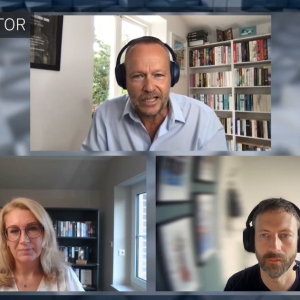Peabody, Massachusetts-based ScanSoft has been making acquisitions in a bid to fend off considerable speech technology competition from IBM Corp, as well as a number of specialists such as Fonix Corp, Nuance Communications Inc and Rhetorical Systems Ltd. In October 2002 ScanSoft bought the speech processing business units of Royal Philips Electronics for $35.4m, and in December 2001 it snapped up the assets of bankrupt Lernout & Hauspie Speech Products NV.
SpeechWorks, which is based just down the road from ScanSoft in Boston, Massachusetts, brings to the table speech verification technology, which is particularly valuable in telephony applications as used by the banking and financial services sectors. ScanSoft clearly thought the technology sufficiently worthy for it to offer SpeechWorks a 63% premium on its previous 30-day average share value.
According to ScanSoft, the SpeechWorks acquisition will add 10% to its profits in the 2004 financial year, excluding charges related to the acquisition, on combined revenue of over $200m. Of this, about $125m will come from its speech business, the remainder coming from its document automation products, which include optical character recognition (OCR), eForm design and personal document management applications.
ScanSoft said it also hopes to make cost savings of $27m through office site consolidations and reduction in marketing and administration expenses, as well as headcount reductions, and Mark Erwich, ScanSoft’s international marketing director, told Computergram that about 130 jobs are likely to go.
As well as the technology garnered from the buy, Erwich said the acquisition will broaden its channel and boost its professional services operation.
The deal is structured as a stock swap, each SpeechWorks share being converted to 0.86 ScanSoft shares, and accounted for as a purchase. On closing of the deal ScanSoft said it will have total assets of approximately $386m, including about $60m in cash.
After the deal closes ScanSoft will have technology in speech recognition, text-to-speech (TTS) and speaker verification, as well as a range of applications in dictation, customer service, telecommunications and automotive. The company said it will continue to partner with Cisco, Intel, Microsoft, and IBM with which it also competes. It also OEMs products to the likes of Avaya, Convergys, Delphi, Edify, Intervoice, Motorola, Nortel Networks, and Sony Entertainment.
In its latest quarter ended December 31, ScanSoft announced impressive results, with a fourth-quarter net profit of $4.4m, compared with a net loss of $2.3m, on revenue of $28.4m, up 53%. SpeechWorks, on the other hand, posted a net loss of $15.7m for the fourth quarter to December 31, up from a loss of $11.5m on revenue that fell 16.9% to $9.2m.
In December 2001, ScanSoft bought the assets of Lernout & Hauspie Speech Products, which declared itself bankrupt after its founders were jailed for fraud. Jo Lernout and Pol Hauspie were sent to a Belgian prison as the company was shown to have deceived both auditors and investors in a bid to be the world’s largest speech technology company. Incoming chief executive Philippe Bodson revealed at the time that the company had overstated its 1998 to 2000 revenues by an astonishing $373m.
Interestingly, after ScanSoft secured the L&H assets, SpeechWorks, which was also bidding for the assets, complained in vain that the auction had not followed the prescribed bidding procedures, and asked the bankruptcy court to rebuff ScanSoft’s bid.
The eagerness of companies to bid for the L&H assets (Fonix, Critical Path and Automated Voice Systems were also said to be interested in them) suggests they were well worth the $10m in cash, $3.5m note, and stock worth $26m that ScanSoft paid for them, and now it also has the SpeechWorks technology to add to its portfolio.
ScanSoft said researcher SRI Consulting Business Intelligence believes that businesses and governments will spend $3.5bn on voice technology in 2003, including consultancy and systems integration. It also predicted that spending will rise to $20bn in 2005 and to $40bn in 2007.
Source: Computerwire






